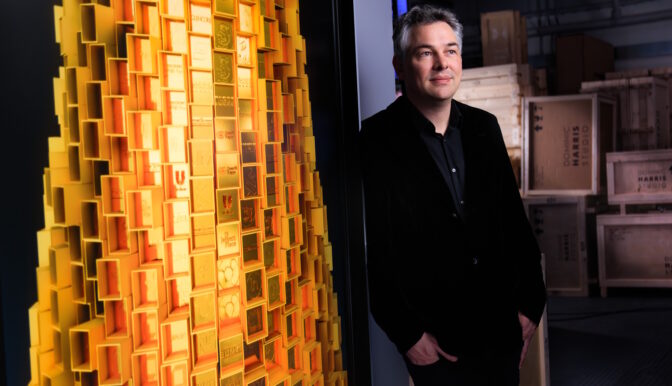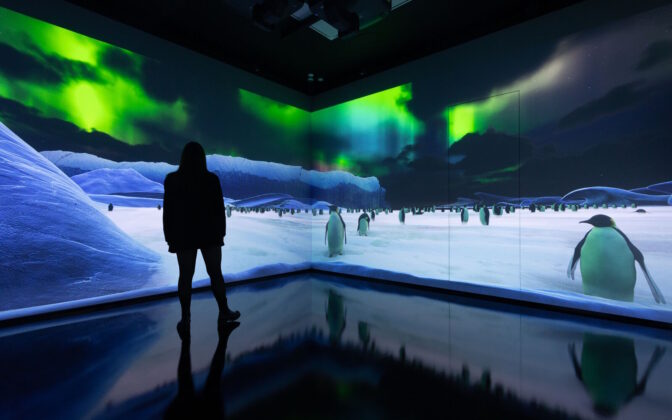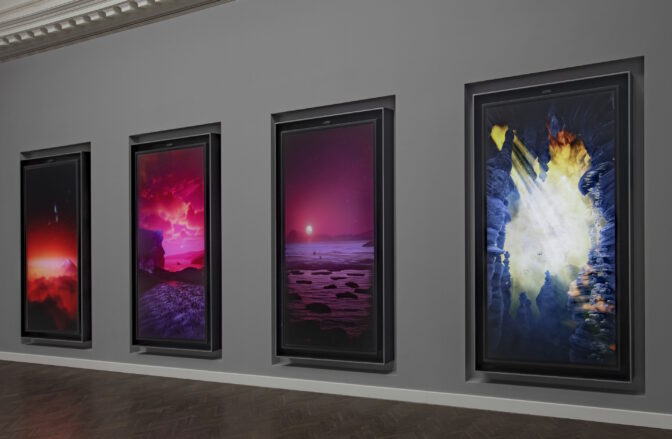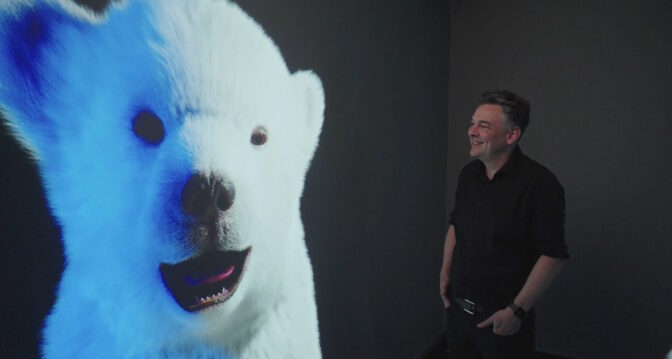For about six years, AI has been an integral part of the artwork of Dominic Harris, a London-based digital artist who’s about to launch his biggest exhibition to date.
“I use it for things like giving butterflies a natural sense of movement,” said Harris, whose typical canvas is an interactive computer display.
Using a rack of NVIDIA’s latest GPUs in his studio, Harris works with his team of more than 20 designers, developers and other specialists to create artworks like Unseen. It renders a real-time collage of 13,000 butterflies — some fanciful, each unique, but none real. Exhibit-goers can make them flutter or change color with a gesture.

The work attracted experts from natural history museums worldwide. Many were fascinated by the way it helps people appreciate the beauty and fragility of nature by inviting them to interact with creatures not yet discovered or yet to be born.
“AI is a tool in my palette that supports the ways I try to create a poignant human connection,” he said.
An Artist’s View of AI
Harris welcomes the public fascination with generative AI that sprang up in the past year, though it took him by surprise.
“It’s funny that AI in art has become such a huge topic because, even a year ago, if I told someone there’s AI in my art, they would’ve had a blank face,” he said.
Looking forward, AI will assist, not replace, creative people, Harris said.
“With each performance increase from NVIDIA’s products, I’m able to augment what I can express in a way that lets me create increasingly incredible original artworks,” he said.
A Living Stock Exchange
Combining touchscreens, cameras and other sensors, he aims to create connections between his artwork and people who view and interact with them.
For instance, Limitless creates an eight-foot interactive tower made up of gold blocks animated by a live data feed from the London Stock Exchange. Each block represents a company, shining or tarnished, by its current rising or falling valuation. Touching a tile reveals the face of the company’s CEO, a reminder that human beings drive the economy.

It’s one work in Feeding Consciousness, Harris’ largest exhibition to date, opening Thursday, May 25, at London’s Halcyon Gallery.
Booting Up Invitations
“Before the show even opened, it got extended,” he said, showing invitations that went out on small tablets loaded with video previews.
The NVIDIA Jetson platform for edge AI and robotics “features prominently in the event and has become a bit of a workhorse for me in many of my artworks,” he said.

Three years in the making, the new exhibit includes one work that uses 180 displays. It also sports an immersive space created with eight cameras, four laser rangefinders and four 4K video projectors.
“I like building unique canvases to tell stories,” he said.

For example, Endurance depicts polar scenes Sir Ernest Shackleton’s expedition trekked through when their ship got trapped in the ice pack off Antarctica in 1915. All 28 men survived, and the sunken ship was discovered last year while Harris was working on his piece.

“I was inspired by men who must have felt miniscule before the forces of nature, and the role reversal, 110 years later, now that we know how fragile these environments really are,” he said.
Writing Software at Six
Harris started coding at age six. When his final project in architecture school — an immersive installation with virtual sound — won awards at University College London, it set the stage for his career as a digital artist.
Along the way, “NVIDIA was a name I grew up with, and graphics cards became a part of my palette that I’ve come to lean on more and more — I use a phenomenal amount of processing power rendering some of my works,” he said.
For example, next month he’ll install Every Wing Has a Silver Lining, a 16-meter-long work that displays 30,000 x 2,000 pixels, created in part with GeForce RTX 4090 GPUs.
“We use the highest-end hardware to achieve an unbelievable level of detail,” he said.
He shares his passion in school programs, giving children a template which they can use to draw butterflies that he later brings to life on a website.
“It’s a way to get them to see and embrace art in the technology they’re growing up with,” he said, comparing it to NVIDIA Canvas, a digital drawing tool his six- and 12-year-old daughters love to use.
The Feeding Consciousness exhibition, previewed in the video below, runs from May 25 to August 13 at London’s Halcyon Gallery.